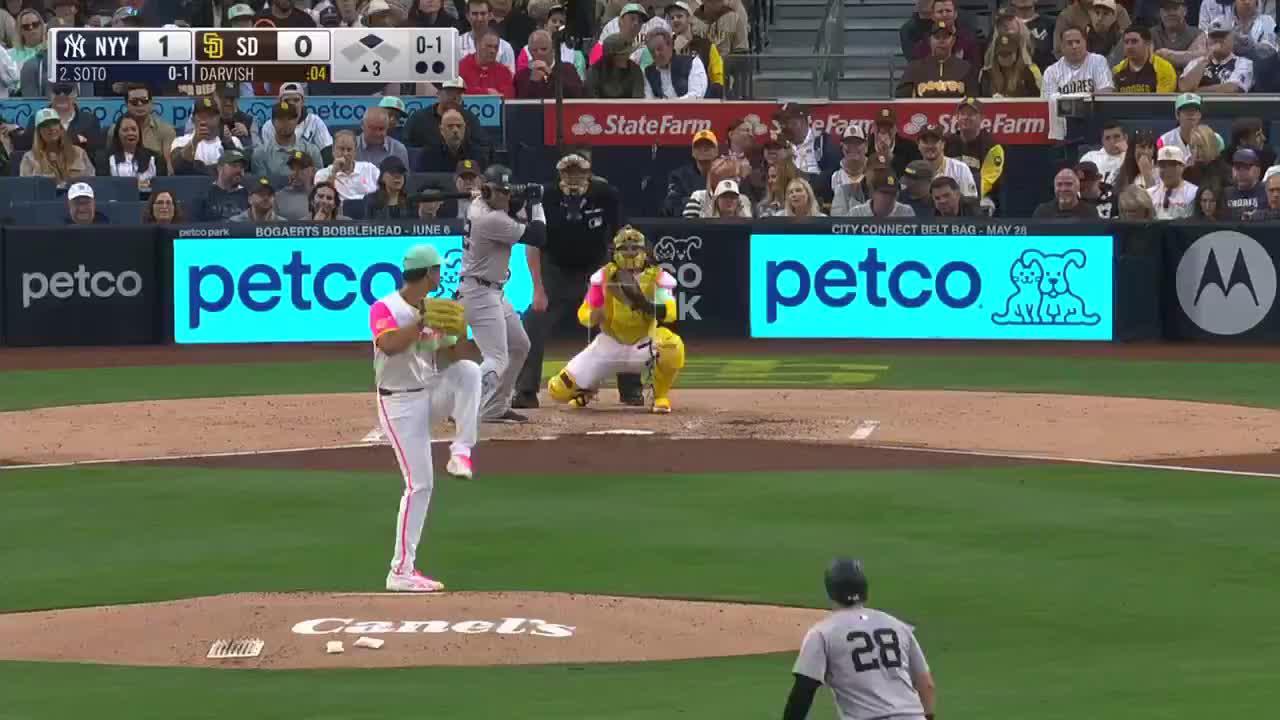When To Intentionally Walk Aaron Judge: A Strategic Analysis

Table of Contents
Judge's Statistical Dominance and its Impact on the Decision
Aaron Judge’s career numbers speak for themselves. His power is undeniable, reflected in his consistently high home run totals, robust RBI counts, and an impressive slugging percentage. But simply looking at raw power isn't enough to determine whether to intentionally walk Judge. The context of the game situation is crucial. Is he batting with runners on base? What's the score? What inning are we in?
-
High OBP vs. Low OBP scenarios: If Judge has a high on-base percentage (OBP) even without hitting home runs, intentionally walking him becomes less attractive as the risk of loading the bases for a subsequent hitter increases. Conversely, if his OBP is lower, the risk of pitching to him might be more acceptable.
-
Impact of Judge's batting average with runners in scoring position (RISP): Judge's performance with runners in scoring position is a critical factor. If he consistently delivers clutch hits in these situations, the incentive to intentionally walk him significantly increases.
-
Analyzing the potential consequences of pitching to Judge versus walking him: A deep dive into Judge's historical performance against specific pitches and pitching styles can reveal patterns and potentially inform the decision. The potential cost of a home run with runners on base versus the risk of loading the bases must be carefully weighed. Specific examples from past games can illustrate both successful and unsuccessful strategies regarding intentionally walking Judge.
The Importance of the Batter Following Judge in the Lineup
The hitter batting after Judge is equally important in the decision-making process. Intentionally walking Judge to avoid a potential home run is a moot point if the next batter is just as dangerous, or even more so. The manager must assess the strengths and weaknesses of the subsequent hitter.
-
Comparing the on-base percentage (OBP) and slugging percentage (SLG) of the hitter after Judge: A weak hitter after Judge might make the intentional walk a more strategic option, while a strong hitter could negate any advantage gained by walking Judge.
-
The impact of a weak hitter after Judge: Facing a weaker hitter after intentionally walking Judge often allows for a more strategic approach, potentially resulting in a double play or a less damaging outcome.
-
The risk of loading the bases for a powerful hitter: The biggest risk of intentionally walking Judge is loading the bases for a powerful hitter, setting up a scenario with potentially disastrous consequences.
Considering the Game Situation and Strategic Context
The decision to intentionally walk Aaron Judge is highly dependent on the specific game context. The score, the inning, and the state of the opposing bullpen all play a crucial role.
-
Late-game scenarios with a close score: In a close late-game situation, intentionally walking Judge to avoid a game-winning home run might be the most prudent strategy.
-
Early-game situations with a significant lead or deficit: With a substantial lead or deficit, the risk tolerance changes, impacting the decision to intentionally walk Judge. A large lead might encourage more aggressive pitching strategies, while a large deficit might make a walk more palatable.
-
The importance of considering the opposing team's bullpen: The availability and quality of the opposing team's bullpen influences the decision. If they have a weak bullpen, a walk might be a riskier option.
The Psychological Aspect: Intimidation and Momentum
Beyond the statistical analysis, the psychological aspect of intentionally walking Aaron Judge is significant. The decision can impact the momentum of the game and affect the confidence of both teams.
-
The perception of “giving up” a run: Intentionally walking a player like Judge can be perceived as conceding a run, potentially affecting team morale and the pitcher's confidence.
-
The potential for Judge to disrupt opposing team’s momentum: Even without hitting a home run, Judge's mere presence in the batter's box can create pressure and disrupt the opposing team's rhythm.
-
The risk of demoralizing one's own pitching staff: Repeatedly walking Judge can potentially demoralize the pitching staff and undermine their confidence.
Conclusion: The Strategic Nuances of When to Intentionally Walk Aaron Judge
The decision of whether or not to intentionally walk Aaron Judge is a multifaceted strategic challenge. It requires a careful assessment of his statistical performance, the capabilities of the batter following him, and the broader context of the game situation. There's no single right answer; it's a complex equation with numerous variables. By carefully weighing these factors, you can better understand the strategic nuances of when to intentionally walk Aaron Judge, significantly improving your analytical skills in baseball.

Featured Posts
-
 What Happened Between Barbie Ferreira And The Euphoria Cast Following Her Departure
May 14, 2025
What Happened Between Barbie Ferreira And The Euphoria Cast Following Her Departure
May 14, 2025 -
 Paolinis Dubai Reign Ends Due To Kenin Injury
May 14, 2025
Paolinis Dubai Reign Ends Due To Kenin Injury
May 14, 2025 -
 Bahnreiseplanung Oschatz Nach Saechsische Schweiz
May 14, 2025
Bahnreiseplanung Oschatz Nach Saechsische Schweiz
May 14, 2025 -
 Deportation Des Oqtf Analyse De La Decision Controversee De Laurent Wauquiez
May 14, 2025
Deportation Des Oqtf Analyse De La Decision Controversee De Laurent Wauquiez
May 14, 2025 -
 Zhittya Ta Kar Yera Selin Dion Khronologiya Podiy Ta Stan Zdorov Ya Spivachki
May 14, 2025
Zhittya Ta Kar Yera Selin Dion Khronologiya Podiy Ta Stan Zdorov Ya Spivachki
May 14, 2025
